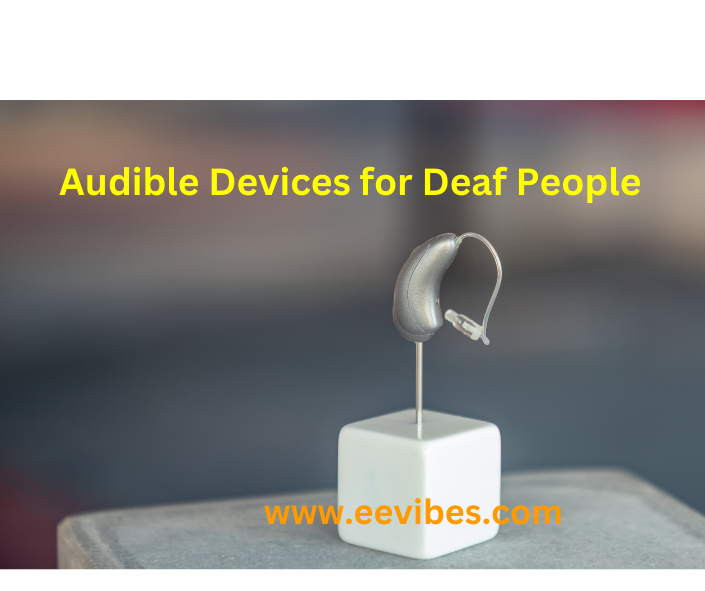
Best Audible Devices for Deaf People
Best Audible Devices for Deaf People 2022. Best Audible devices for deaf people have come a long way in recent years. Hearing aids and cochlear implants are the most commonly used devices for deaf people, as they help to restore some of their hearing capacity. For those who need more assistance, there are also devices such as sound amplifiers and personal FM systems that can improve sound quality and clarity.
However, these devices can be expensive and may not be suitable for all deaf people. In this case, there are other options that are more affordable and accessible. These include vibrating alarm clocks, doorbells with flashing lights, and telephone amplifiers.
For those looking to stay connected while they’re on the move, there are also devices such as Bluetooth hearing aids and personal amplifiers. These devices help to amplify sound from a distance, allowing deaf people to stay connected to their environment even when they’re not wearing hearing aids or cochlear implants.
Finally, for those who are looking for more of an immersive experience, there are also products such as the Visual Sound Translator. This device is designed to turn speech into text and vibrate in response, allowing deaf people to understand what’s being said even if they can’t hear it.
No matter what your needs are, there are a variety of Best Audible devices for deaf people that can help make life easier. Whether you need assistance with communication, hearing, or even just staying connected, these devices can help make it happen. All you need to do is find the right one for your situation. With so many devices on the market today, there’s sure to be something that fits your needs perfectly. Best of luck in finding the perfect device for you!
Speech to Text Devices for Hearing Impaired
Speech to text devices for hearing impaired provide deaf and hard of hearing individuals with access to sound. These devices can be used for a variety of purposes, such as teleconferencing, lectures, presentations, and seminars. Speech-to-text devices work by capturing the audio signal from a microphone and using special software to convert it into text that is displayed on a screen or sent directly to a computer.
Speech-to-text devices can also be used to translate spoken language into another language, giving deaf and hard of hearing individuals access to audio content in their native language. Speech-to- text devices are becoming increasingly popular among deaf and hard of hearing individuals, as they provide convenient access to sound without the need for expensive equipment or special training.
Speech-to-text devices are becoming increasingly affordable, making them accessible to more people than ever before. They provide a great way for deaf and hard of hearing individuals to stay connected with their peers and the wider world.
Whether you’re looking for a device that can translate spoken language into text in real time or one that can store audio recordings for playback at a later time, there is an Audible device that’s right for you. Audible devices provide deaf and hard of hearing individuals with access to sound in whatever way works best for them.
From simple transcription tools to sophisticated transcription systems, there is a Speech-to-Text device that meets the needs of every deaf and hard of hearing individual. With audible’s Speech-to-Text devices, you can stay connected to the world around you and keep up with the latest news, no matter what your level of hearing impairment is audible Speech-to-Text devices are designed to be user friendly and easy to use.
Apps for Deaf People
There are a number of apps that can be helpful for deaf or hard of hearing individuals. Some of these apps provide real-time text captions for spoken dialogue, while others offer translation services or assistive communication tools. Here are a few examples of apps that may be useful for deaf people:
- Live Caption: This app, available on Android devices, provides real-time captions for spoken dialogue in a variety of languages. It can be used to caption phone calls, videos, and other audio sources.
- Voiceitt: This app, available on iOS and Android devices, uses artificial intelligence to translate spoken words into text in real time. It can be helpful for people who have difficulty speaking or understanding spoken language.
- Proloquo2Go: This app, available on iOS devices, is a communication tool for individuals who are nonverbal or have difficulty speaking. It allows users to create and customize buttons with text or symbols, which can be used to communicate with others.
- Google Translate: This app, available on iOS and Android devices, provides translation services for a wide range of languages. It includes a feature called “Conversation Mode,” which allows users to have a conversation with someone in a different language by speaking into their device and seeing the translation on the screen.
- CapTel: This app, available on iOS and Android devices, is designed for individuals who have difficulty hearing on the phone. It provides real-time captions of phone conversations.
It’s worth noting that these are just a few examples of apps that may be helpful for deaf individuals, and there are many other options available. It’s always a good idea to research and compare different apps to find the one that best meets your needs.
Also read here: